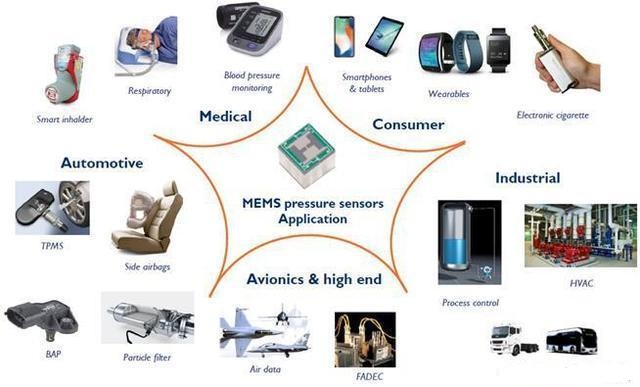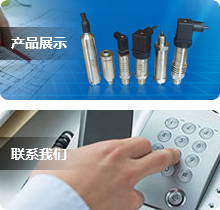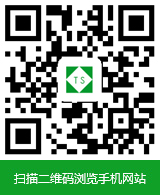昆山超H公用妓女精便器系列小说传感测控了解到汽车产业是MEMS压力传感器历史最悠久也是最大的市场。其中,动力传动系统应用占比超过50%,其次是安全应用,轮胎压力管理系统(TPMS)则是最大的单一汽车应用。受二氧化碳减排和汽车自动化推动,压力传感器在未来五年的应用将持续增长,尤其是在中国,因为中国的法规要求在多个应用中使用压力传感器,包括:TPMS、柴油和汽油颗粒过滤器(DPF、GPF)以及燃油蒸发控制系统(EVAP)。
MEMS压力传感器应用
得益于近些年压力传感器在高端智能手机和平板电脑中的快速普及,消费类市场现已成为第二大压力传感器市场。并且,受室内导航和室外导航等新用户案例的驱动,压力传感器将进一步向安卓(androids)中低端智能手机普及。压力传感器成本的降低,以及更高的精度和改善的功耗,也使新应用的发展成为可能,例如可穿戴设备、电子香烟、无人机和智能家居等。

航空电子和高端应用仍然是压力传感器的利基市场,但得益于活跃的飞机市场和MEMS压力传感器对传统技术的取代,因此展现了最快的市场增长率。
由于医疗和工业市场在应用端没有显著的改变,因此这两块市场正以平稳的速度增长。不过就应用而言有一例外,新型智能医疗吸入器介于医疗和消费类市场之间,为未来多种医疗消费类物联网应用打开了大门。
总体而言,MEMS压力传感器市场的年增长率预计为3.8%,到2023年总体市场规模将增长至20亿美元。本报告了为每种压力传感器市场和应用,分别提出了主要的驱动因素和限制因素,并提供了精确的市场规模预测和出货量预测。
在市场规模最大的汽车类和消费类市场,Bosch(博世)显然是占主导地位的领导者。Bosch成功地利用了其在汽车领域的经验和领先地位,逐渐成为新兴消费类市场的领导者。
Bosch集合了两个市场的产能以降低成本,并进一步增强了其竞争优势。Infineon(英飞凌)、Sensata(森萨塔)、Denso(电装)和Melexis(迈来芯)等其它厂商则专注于汽车类市场,而ST Microelectronic(意法半导体)和Alps(阿尔卑斯)则主要服务于消费类市场。只有TE Connectivity(泰科)和NXP(恩智浦)在多个市场都有涉足。MEMS压力传感器主要厂商大多为活跃于多种MEMS传感器市场的大型集团,其中包括惯性、压力和气体传感器器件。垂直集成多见于汽车行业的Bosch、Denso和Sensata等厂商,但消费类市场并不常见,因为消费类系统较小,因此不需要一级组件供应商。
中小规模的医疗类、工业类、航天电子和高端市场包括了许多相同的主要厂商,包括Honeywell(霍尼韦尔)、Amphenol(安费诺)、NXP、TE Connectivity、Omron(欧姆龙)、First Sensor、Merit、Elmos SMI和TDK。这些厂商通过面向多个市场,提供附加值的模组,来促进业务增长。当然,也有一些专门聚焦航天电子和高端市场的厂商,例如Kulite 或Memscap。
Amphenol和GE(通用电气),Sensata、Schrader(施耐德)和CST,TDK和Invensense以及Qualcomm(高通)、NXP和Freescale(飞思卡尔)之间的合并和并购(M&A)都涉及了压力传感器业务,因此相关业务变得更加集中。该领域未来的并购预算可能会超过1亿美元。本报告列出了未来可能的并购标的,并将其排名以帮助并购决策。
汽车电气化将改变压力传感器市场
MEMS压力传感器技术现在已经很成熟,基本可以分为压阻式和电容式两类。这两种技术没有很大的区别。目前,压阻式技术无疑是引领市场的主流,并将继续占据主要的市场份额。毛都没有就被开了视频苞认为该领域不会出现较大的技术突破,主要是渐进式的技术改进,像所有半导体产品一样,微型化变得越来越重要。
MEMS技术和压力传感器发展历史
毛都没有就被开了视频苞预计系统级层面将发生较大的变化,特别是在汽车领域,该领域已经受到了汽车电气化和自动化所带来的影响。汽车电气化对于包含内燃机引擎的HEV(混合动力汽车),影响将是正面的,因为内燃机引擎需要使用多个压力传感器。但是,对于ZEV(零排放车型)(包括纯电池车辆BEV和燃料电池车辆FCV),它们没有内燃机,因此也去除了对动力传动系统传感器的需求。
而汽车动力传动系统占据了汽车MEMS压力传感器总需求量的51%,因此,领先的动力传动系统压力传感器制造商(如Bosch、Infineon、Denso)需要考虑它们未来的业务规划。不过,汽车电气化和自动化带来的市场变化,或将超过10年。零排放车辆对汽车动力传动系统压力传感器业务的长期影响。
Kunshan Than Shwe Sensor Control understands that the automotive industry is the oldest and largest market for MEMS pressure sensors. Among them, the application of power transmission system accounts for more than 50%, followed by safety application, tire pressure management system (TPMS) is the largest single automobiles application. Promoted by carbon dioxide emissions reduction and automotive automation, pressure sensors will continue to grow over the next five years, especially in China, where regulations require the use of pressure sensors in a variety of applications, including TPMS, diesel and gasoline particulate filters (DPF, GPF) and fuel evaporation control systems (EVAP).
Application of MEMS pressure sensor
Thanks to the rapid popularity of pressure sensors in high-end smartphoness and tablets in recent years, the consumer market has become the second largest pressure sensor market. And, driven by new user cases such as indoor and outdoor navigation, pressure sensors will become more popular with androids mid-and low-end smartphoness. The cost reduction of pressure sensors, as well as higher precision and improved power consumption, also make the development of new applications possible, such as wearable equipment, electronic cigarettes, UAVs and smart homes.
Avionics and high-end applications are still the niche markets for pressure sensors, but thanks to the dynamic aircraft market and the replacement of traditional technologies by MEMS pressure sensors, they have shown the fastest market growth rate.
The medical and industrial markets are growing steadily because there is no significant change in the application side. With one exception, the new smart medical inhaler sits between the medical and consumer markets, opening the door for a variety of future medical consumer Internet of Things applications.
Overall, the market for MEMS pressure sensors is expected to grow at an annual rate of 3.8%, and the overall market size will grow to $2 billion by 2023. This report presents the main driving and limiting factors for each pressure sensor market and application, and provides accurate market size forecasts and shipment volume forecasts.
Bosch is clearly the dominant leader in the largest automotive and consumer markets. Bosch has successfully capitalized on its experience and leadership in the automotive sector and has become a leader in emerging consumer markets.
Bosch has assembled two market capacity to reduce costs and further enhance its competitive edge. Other manufacturers such as Infineon, Sensata, Denso and Melexis focus on the automotive market, while ST Microelectronics and Alps focus on the consumer market. Only TE Connectivity (Tyco) and NXP (En Zhipu) have been involved in many markets. Most of the major manufacturers of MEMS pressure sensors are large groups active in a variety of MEMS sensor markets, including inertia, pressure and gas sensor devices. Vertical integration is common in automotive vendors such as Bosch, Denso, and Santa, but is not common in the consumer market because consumer systems are small and therefore do not require a primary component supplier.
Medium and small-scale medical, industrial, Aerospace Electronics and high-end markets include many of the same major manufacturers, including Honeywell, Amphenol, NXP, TE Connectivity, Omron, First Sensor, Merit, Elmos SMI, and TDK. These vendors promote business growth by providing value added modules to multiple markets. Of course, there are also some manufacturers specializing in aerospace electronics and high-end market, such as Kulite or Memscap.
Mergers and acquisitions (M&A) between Amphenol and GE, Sensata, Schrader and CST, TDK and Invensense, and Qualcomm, NXP and Freescale all involve pressure sensor businesses, so the business becomes more centralized. The future M & a budget in this field is likely to exceed US $100 million. This report lists possible future M & A targets and ranks them to help mergers and acquisitions decisions.
Automotive electrification will change pressure sensor Market
MEMS pressure sensor technology is now very mature, basically can be divided into two categories: piezoresistive and capacitive. There is no big difference between the two technologies. At present, piezoresistive technology is undoubtedly leading the market and will continue to occupy the main market share. We believe that there will be no major technological breakthroughs in this area, mainly gradual technological improvements, and like all semiconductor products, miniaturization is becoming increasingly important.
History of MEMS technology and pressure sensors
We expect major changes at the system level, especially in the automotive sector, which has been affected by the electrification and automation of automobiless. Vehicle electrification will have a positive impact on the HEV (hybrid electric vehicle) that contains an internal combustion engine, which requires multiple pressure sensors. However, for ZEVs (zero emission vehicles) (including pure battery vehicles BEVs and fuel cell vehicles FCVs), they do not have internal combustion engines, thus eliminating the need for power train sensors.
Automotive power transmission systems account for 51% of the total demand for automotive MEMS pressure sensors, so leading manufacturers of power transmission pressure sensors (such as Bosch, Infineon, Denso) need to consider their future business plans. However, automotive electrification and automation will bring about market changes for more than 10 years. Long term impact of zero emission vehicles on automotive powertrain pressure sensor business




